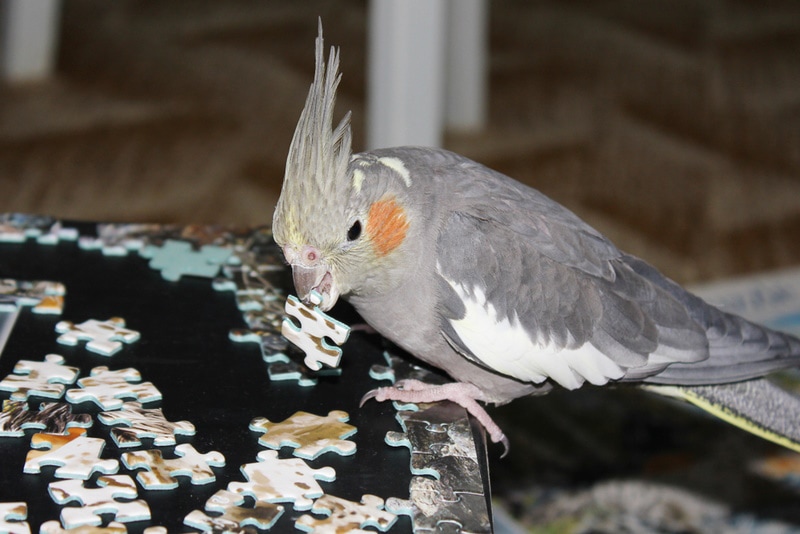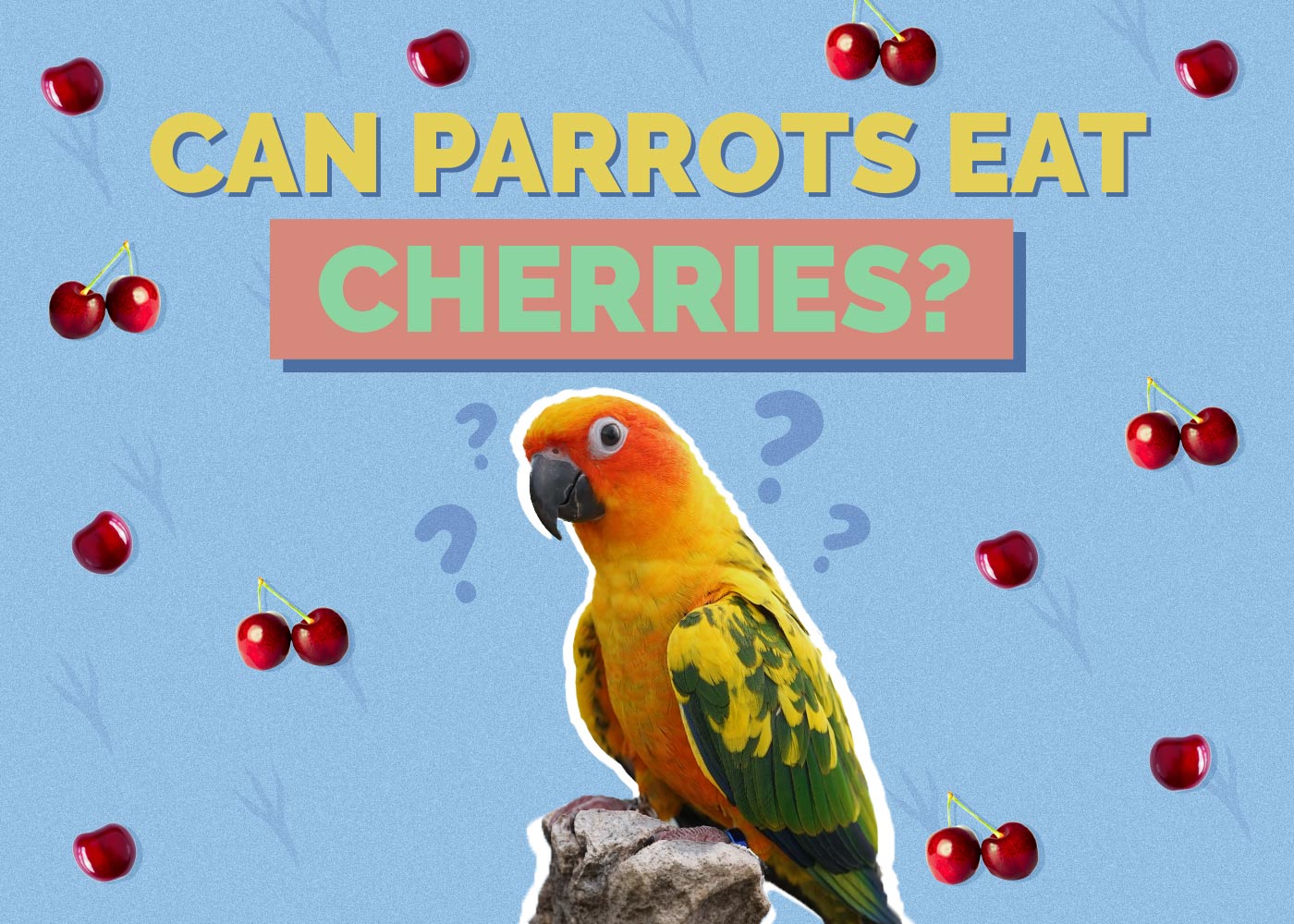10 Best Parrots for Beginners: Pictures, Facts & History

Updated on
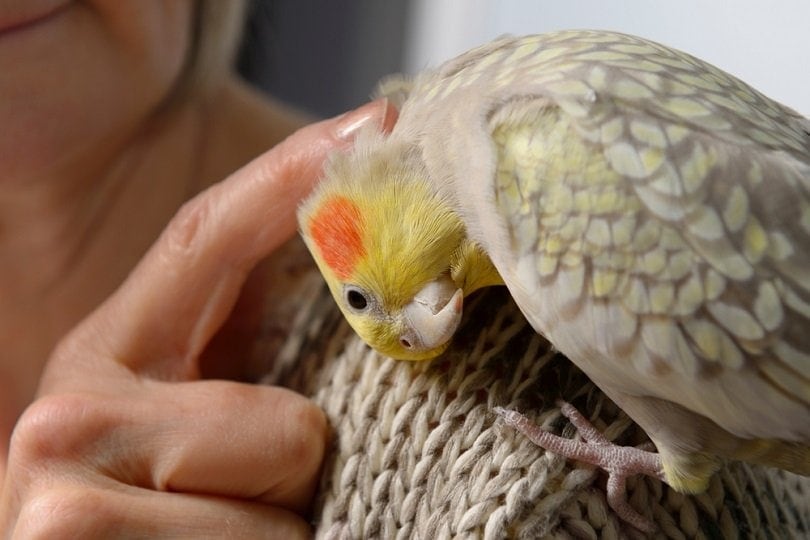
There are approximately 350 different species of birds that are classified as parrots, and when considering hybrids and morphs, there are at least 400 different options to choose from.
While some of these species, like the cockatoo, are large, intriguing, and spectacular birds, they are not considered the best for beginners, because they can be moody and may even become aggressive.
On the other hand, cockatiels, which are among the most popular pet bird species of any type, are relatively low maintenance, take to handling if you start when they are young, and don’t tend to bite.
Below, we have listed 10 of the best parrots for beginners to help you decide on your ideal first bird.
What Makes a Good Beginner Parrot?
There really is a huge range of parrots and parrot species, varying in size, temperament, and intelligence. All require some degree of interactivity and most require time out of their cage. But a good beginner parrot is relatively low maintenance, takes well to handling, and is unlikely to be aggressive.
It is important to remember that whatever breed you choose, the bird will require some care and there is no such thing as a no-maintenance bird.
The 10 Best Parrots for Beginners
1. Cockatiel
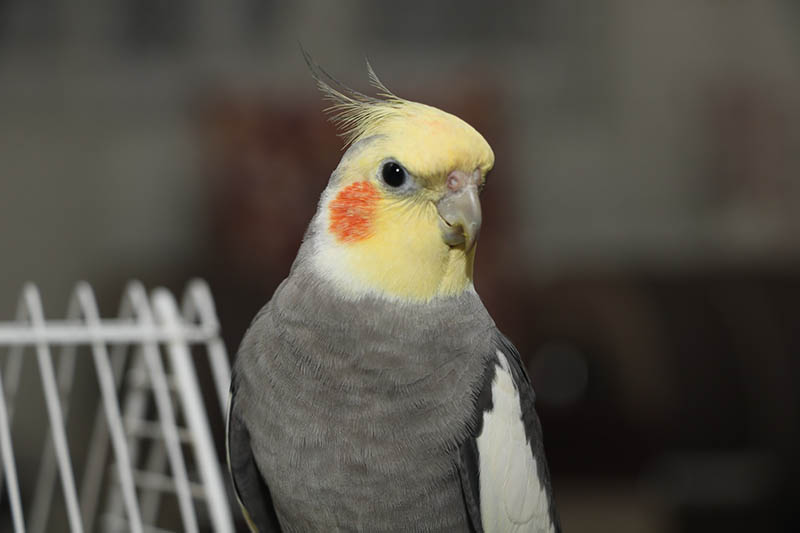
| Origin: | Australia |
| Lifespan: | 10–15 Years |
| Size: | 12–13 Inches |
The cockatiel is a member of the parrot family that is naturally only found in Australia, although some feral populations may be found in other parts of the world. The breed is a reasonable size, at around 12 inches, and as long as you get it accustomed to being handled from a young age, an adult cockatiel will tolerate and even enjoy spending time with you.
Although they are relatively quiet, cockatiels can make very loud screeching noises when they are excited or disturbed. They can learn to speak, although this isn’t guaranteed, and they are intelligent enough to be taught some basic tricks and commands. They tend to thrive when kept in a community of two or more cockatiels, or they can become lonely and depressed when kept alone.
2. Parakeet
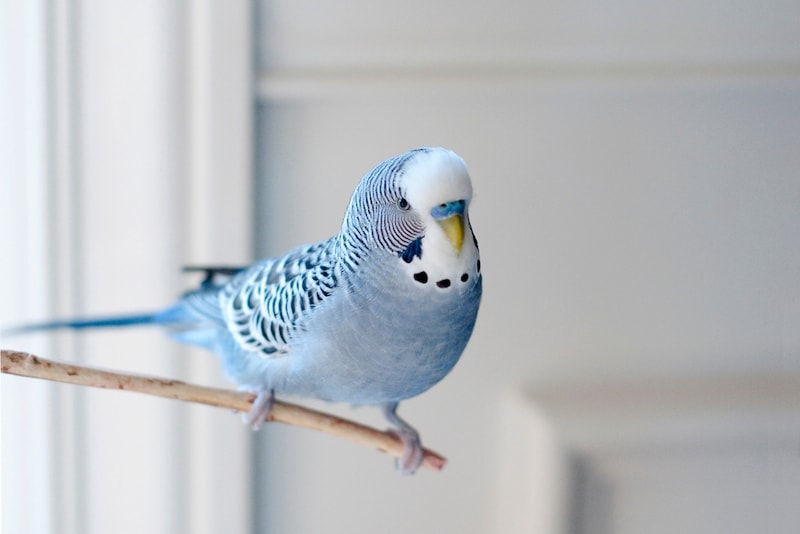
| Origin: | Australia |
| Lifespan: | 7–15 Years |
| Size: | 7–8 Inches |
The parakeet, which is also known as a budgerigar or budgie outside the U.S., is a small and colorful bird. It can come in a range of colors including yellow, blue, and green. It is a sweet bird that can be very affectionate and friendly, although it can take time to tame one.
Parakeets can make very good talkers and are capable of learning more words than some of the larger parrot species. Even if yours doesn’t learn to mimic human speech, this happy little parrot will chatter and chirp to itself. Like many parrot species, the parakeet is a sociable bird, and it will do better when kept with other parakeets rather than alone.
3. Conure
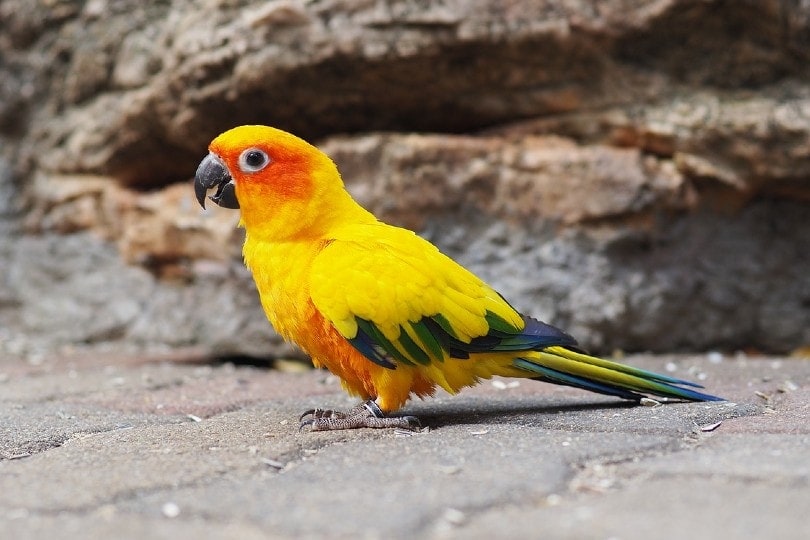
| Origin: | South America |
| Lifespan: | 15–30 Years |
| Size: | 10–12 Inches |
There are several species of conures with the most popular being the Green-cheeked conure and the Sun conure. Different species do have different characteristics and you will have to do some research to ensure that you get the one most suitable for your needs.
The Green-cheeked conure is small and fairly quiet. It’s loving and affectionate, as well as fun to watch. The Sun conure, on the other hand, is a little larger and a lot louder. Conures can talk, although they don’t usually develop the most extensive vocabulary. They also tend to bond more closely with one person unless all members of the family spend equal time with the bird.
4. Parrotlet
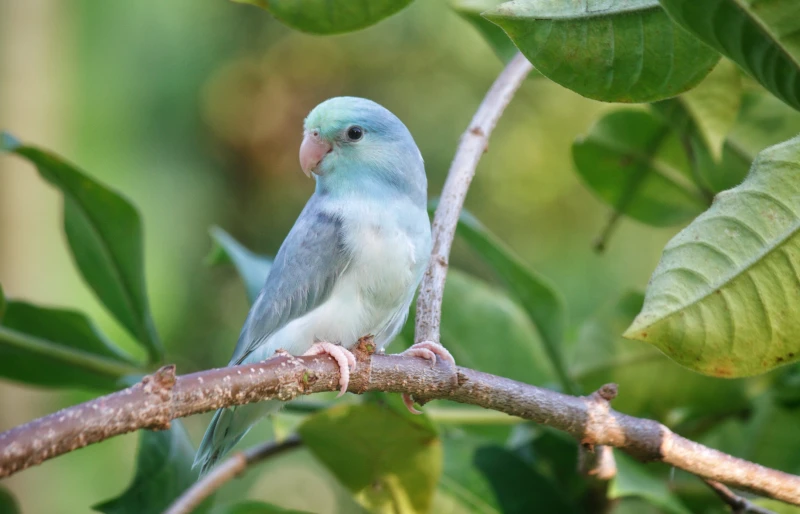
| Origin: | Mexico and South America |
| Lifespan: | 15–20 Years |
| Size: | 3–6 Inches |
Parrotlets are small: in fact, they are one of the smallest of the parrot species. But despite being small and having tuneful, pretty songs, they can be quite bossy and will demand attention and rewards. They can form a close bond with their humans, although handling will likely always be on the parrotlet’s terms, rather than yours.
They are gutsy birds and won’t usually back down from confrontation, so keep them away from bigger pets, their beaks are strong so a nip from a parrotlet can hurt. Although they can be a little boisterous, regular handling and early socialization will yield an affectionate and sweet bird that makes a good first parrot.
5. Indian Ring Neck Parrot

| Origin: | Africa and Asia |
| Lifespan: | 15–25 Years |
| Size: | 12–16 Inches |
The Indian ring neck parrot is bigger than the likes of the cockatiel and certainly bigger than parrotlets but is still considered a relatively small parrot, generally measuring up to 16 inches to the tip of the tail. However, it does require plenty of room to spread its wings and fly around its cage. It is also quite a loud bird, especially during mating season, so it may not be the best option for owners who live in apartments or close to their neighbors.
However, they are very good talkers and because they are intelligent birds, they can learn tricks and will even obey some basic commands. As long as there’s something in it for them.
6. Senegal Parrot
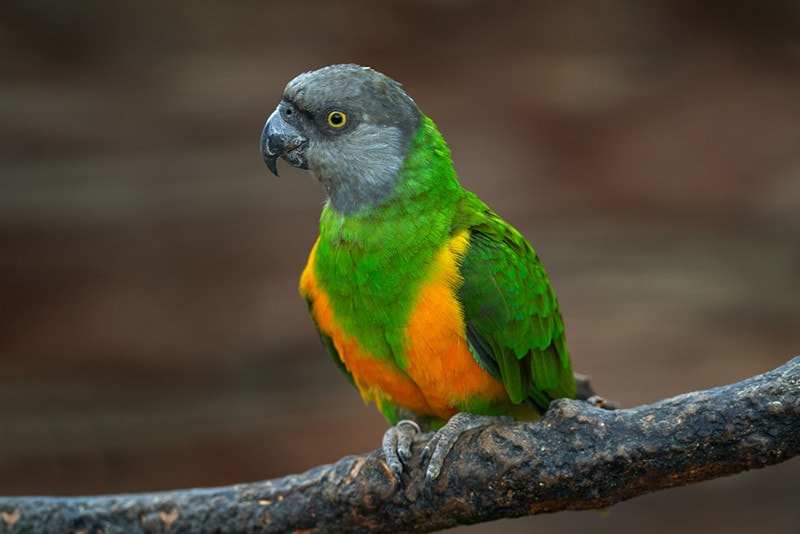
| Origin: | Africa |
| Lifespan: | 25–50 Years |
| Size: | 8–10 Inches |
Senegal Parrots are popular as first-time parrots for individuals and couples. They can form a very close bond with their human owner, and they are considered sweet and affectionate birds. They are also quiet parrots, but this means they don’t like too much noise, which makes them unsuitable for large families or busy homes.
They are entertaining little birds and once you have a bond with a Senegal parrot you can expect a pet that will want to spend as much time with you, and on you, as possible.
7. White-Fronted Amazon Parrot

| Origin: | Mexico |
| Lifespan: | 30–40 Years |
| Size: | 8–10 Inches |
There are a lot of positive aspects to owning a white-fronted Amazon parrot that makes them a good choice of parrot for beginners. They are affectionate and get close to their owners. They are also playful, and they tend to be gentle with their humans rather than attacking with their beaks.
On the other hand, though, they are loud, and they really enjoy using their voice so you can expect a bird that spends a lot of time screeching. If that will bother you, or your neighbors, consider a quieter species. But this also means that they will learn to talk and will happily join in with you.
8. Pionus Parrot
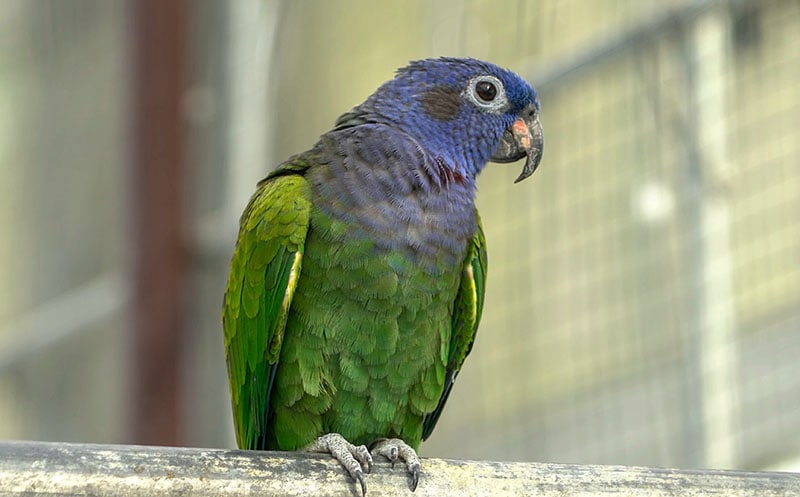
| Origin: | Mexico, Central and South America |
| Lifespan: | 20–30 Years |
| Size: | 9–12 Inches |
The pionus parrot makes a great beginner parrot species because it is quiet and peaceful but still enjoys spending time with its humans. Despite being quiet, they are inquisitive, and they are fun little birds to keep as pets. If kept in a quiet house, they will remain quiet, but they adapt to their living conditions, so if you have a busy house filled with noise, your pionus parrot will become louder, too.
There are different species of pionus and although they are all similar, there are some differences, especially in typical temperament, so it is worth doing your research before deciding which pionus to buy.
9. Quaker Parrot
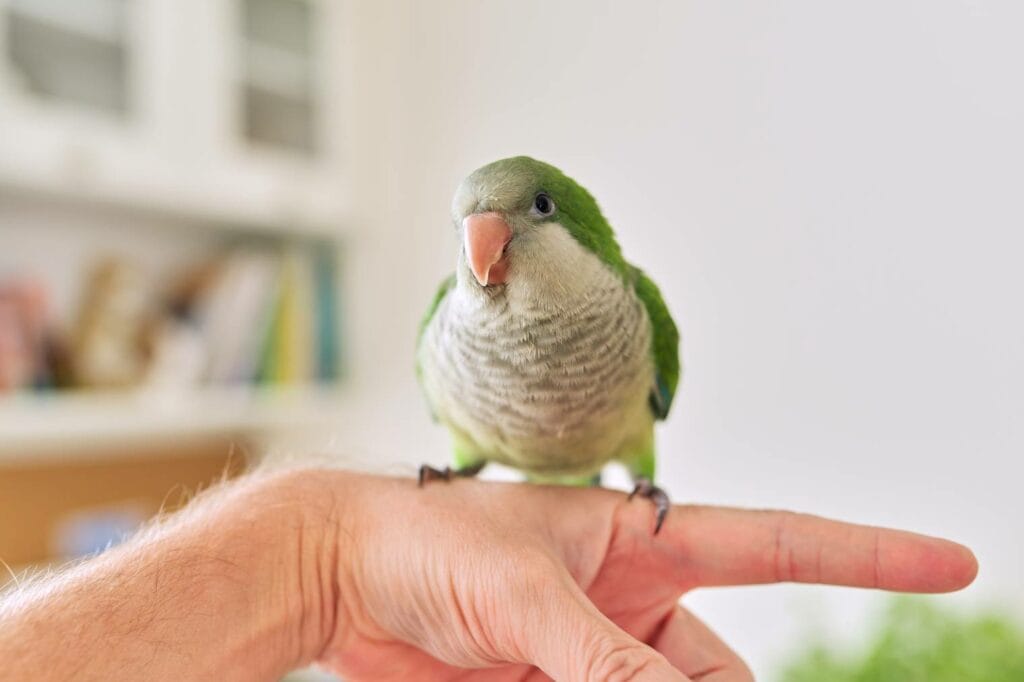
| Origin: | South America |
| Lifespan: | 20–30 Years |
| Size: | 10–12 Inches |
Even in the wild, quaker parrots do well around humans, and this is a good indication of how well they adapt to life in a home. The species gets its name from the bobbing, or quaking, motion that they adopt when walking.
Quakers are confident little birds, and they can learn a lot of words and become adept speakers. They form a close bond with their family although they will generally become closer to the human that gives them the most care and spends the most time with them.
10. African Grey Parrot
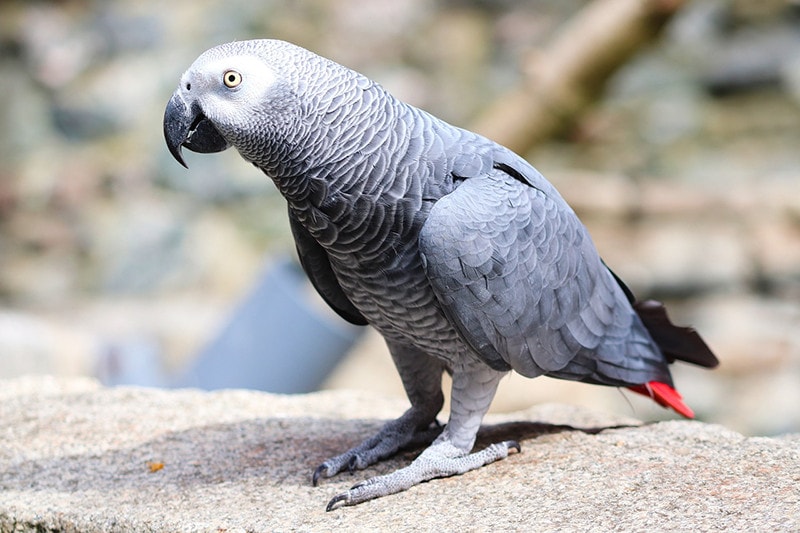
| Origin: | Africa |
| Lifespan: | 20–30 Years |
| Size: | 10–14 Inches |
The African grey is one of the best-known and most widely recognized of the larger parrot species although they don’t actually grow much bigger than a cockatiel. They tend to be friendly, with regular handling and plenty of enrichment in their lives, and they can develop a sizable vocabulary of words, which is one of the reasons they are so popular.
However, African greys are very intelligent, and they will use this intelligence to entertain themselves and to find ways to cause mischief. This means that they aren’t necessarily the best option if you don’t have a lot of time to spend with your pet bird.
Conclusion
There are a lot of parrot species, each with their own characteristics and traits. Choose a bird according to how busy your house is, whether you have children, and whether you have a lot of time to spend bonding with and interacting with your new pet bird. Cockatiels are generally considered good parrots for beginners, along with parakeets, both of which can learn to talk, although many people don’t realize it.
See Also:
Featured Image Credit: Reimar, Shutterstock



